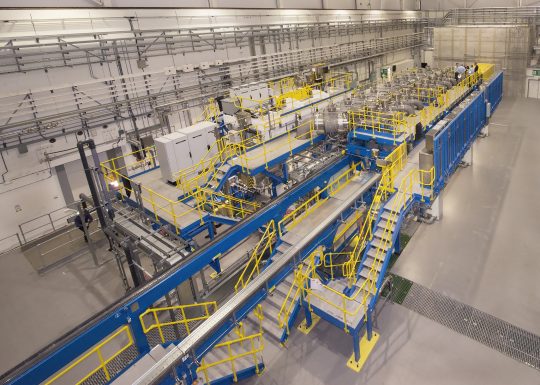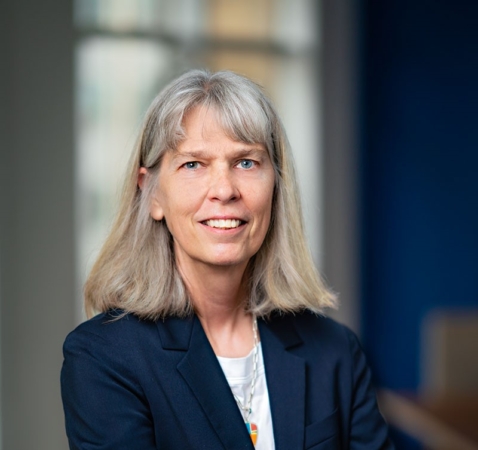This is an archived news story which is over 12 months old and may contain out of date information
Pushing the boundaries of science, engineering and technology
A personal view by
Iain Coucher, CEO, Atomic Weapons Establishment (AWE)
I am in a huge modern building. Along the middle of the building lies a series of inductive cells, interconnected with wires, control systems, pipes, valves integrated into a long probe. This has been fifteen years in the making, culminating in a capability never been seen before.
Somebody on planet earth (actually, a scientist at AWE) possessed the vision to contemplate the creation of a unique piece of equipment that will now be used to push the boundaries of science to understand what happens in the nanoseconds before the detonation of the nuclear phase of a warhead. And somebody else has taken this desire and combined it with the creative capabilities of engineers and turned it into a reality.
These are our people. People like me who, at school, were excited and captivated by science, engineering and technology – with curiosity and a seemingly in-built desire to understand the world around them. We studied science and maths and technology, long before the acronym STEM came along… we couldn’t have known what lay ahead, but the stuff we learned at school, at colleges and universities would stay with us forever. Throughout our lives we have continued to learn about new techniques (computer aided design and manufacturing), new materials (carbon fibre, advanced plastics…), new methods (3D printing, machine tools of unthinkable levels of precision…). And, even today, we remain excited about the opportunities and challenges that lie ahead.

The piece of equipment I am looking at is one of the most powerful x-ray machines ever constructed in the world, capable of delivering millions of volts. But I could be looking at any number of pieces of experimental equipment we have at AWE. It could be some of the most advanced manufacturing equipment… or production lines that uniquely combine components made of high explosives and radioactive material. It could be a one-of-a-kind building we have designed to assemble the most important part of the nation’s nuclear deterrent.
Or it could be the most advanced, high performing computing facilities in the UK.
The thing that inspires me is the vision that people have at AWE. People who can conceive of experiments or technical solutions to anything… from the tiniest of measurement systems, to weapons and to buildings.
Imagine the challenge of designing and manufacturing a product that is launched from under the surface of the sea, flies thousands of kilometres, going into the extremely low temperatures of outer space, comes hurtling through the atmosphere – experiencing high g-forces and, whilst travelling at thousands of kilometres per hour has to perform at a precise point in time and space. And we have to be 100% sure it would work exactly as intended.
We are fortunate to be in a society that has no desire to see it in use, but imagine the challenge of doing all this, and not being able to test it. No wonder AWE attracts some of the best, brightest and most gifted scientists, engineers, IT professionals, materials scientists, machinists, crafts people … well, just about everybody, really.
Few people get to do something so technically challenging and so important. I am incredibly proud to be leading this great company – a company with a long history and a rich heritage of supporting the UK’s nuclear deterrent and keeping our country safe. And I know that every one of the 5,500 women and men of our organisation is proud to be part of AWE.
AWE.co.uk/careers
Follow us on Twitter @AWE_plc





